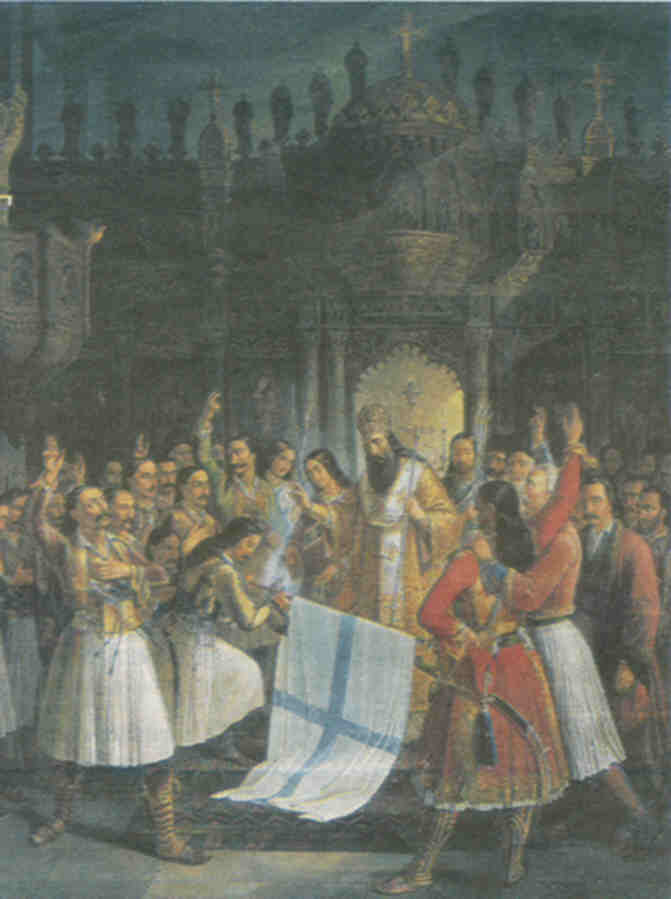 |
|
|
|
|
 25 March, 1821 |
|
|
|
|
25 March 1821: Greek National Independence Day. The classic 19th-century painting by Theodore Vryzakis depicts the symbolic beginning of the national revolution, which gave birth to modern Greece after nearly 400 years of Ottoman rule following the pillage of Constantinople by the Turks in 1453. The metropolitan bishop of Old Patra, Germanos, blesses 'the blue-and-white flag as local fighters take the revolutionary oath of 'Freedom or Death' at the monastery of Agia Lavra, near the town of Kalavryta. The actual historical event refers to bishop Germanos' celebrations in 1821 for the liberation of the city of Patra, in conjunction with the religious feast of the Annunciation of the Virgin Mary, on March 25, following early news of the revolution's first military victory against the Turks at Kalavryta. In fact, no fewer than four towns can claim to be the birthplace of the Greek uprising. There is Areopolis in southern Peloponnese (March 17); Kalamata in southeastern Peloponnese, where Theodoros Kolokotronis, the most important |
 |
|
military leader during the war of independence, forced the Turks to surrender (March 23); Vostitsa (today's Aigion) in the gulf of Corinth, whence the Turks fled unopposed (March 23); and Kalavryta, where on March 21 a force of 600 Greeks compelled the Turks to take refuge in their fortified buildings prior to their eventual surrender on the 26th. The choice of this date as the official national holiday in 1837 was not a matter of historical and religious coincidence. The Filiki Etaireia, a secret society formed in 1814 at Odessa, Russia, to pave the way for the revolution and counting several clerics (including Germanos) among its initiates, decided to turn the religious holiday of Annunciation into the focal date for the near-simultaneous armed uprisings of enslaved Greeks in many parts of the mainland and in Crete in the last 10 days of March 1821. The act of divine grace signified by the Annunciation, was considered by the revolutionary leaders as the ideal 'symbolic timing,' to stir up popular enthusiasm among ordinary Greeks for the eight arduous years of struggle that were to follow until freedom was finally won. Some 186 years later, a revised history textbook for 12-year-olds in the 6th grade of primary school has triggered a fierce ongoing controversy because it 'irons out' sections of modern Greek history - including the March 1821 national revolution where the authors find too much 'blood, sweat and tears' would only promote 'nationalism' and 'xenophobia' |
|
|
(Posting date 16 February 2007) HCS encourages readers to view other articles and releases in our permanent, extensive archives at the URL http://www.helleniccomserve.com/contents.html. |
|
|
|
|
2000 © Hellenic Communication Service, L.L.C. All Rights Reserved.
http://www.HellenicComServe.com |
|
